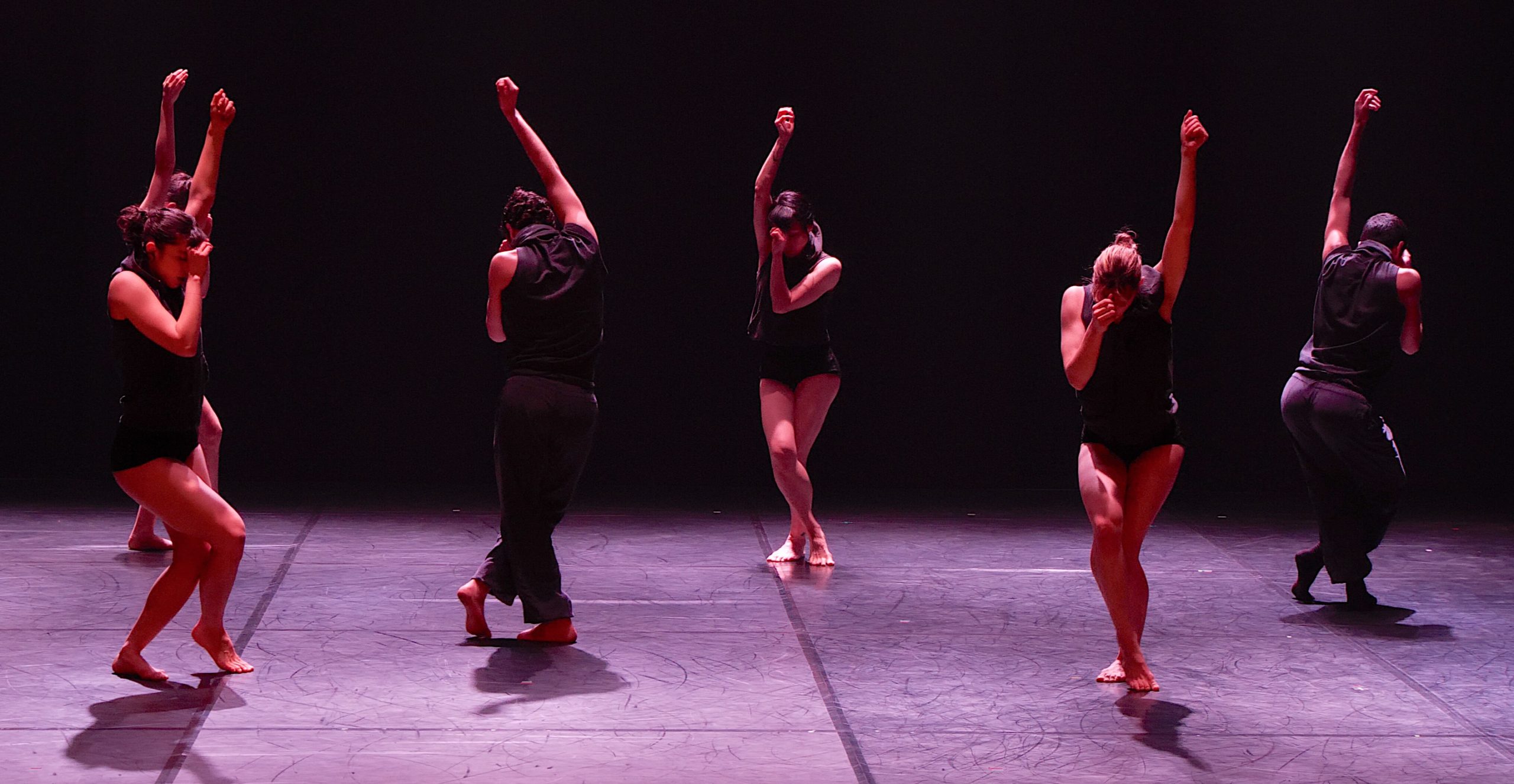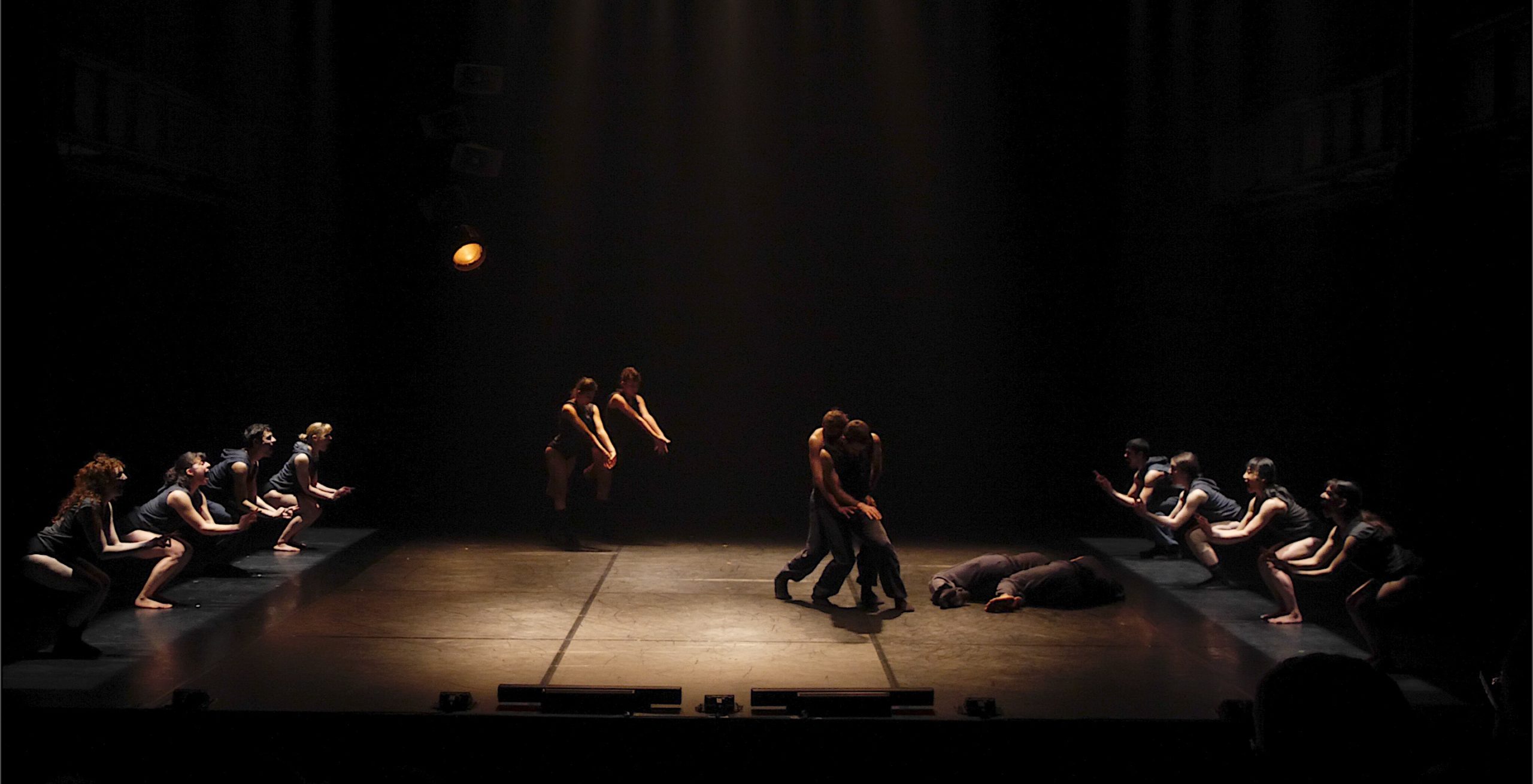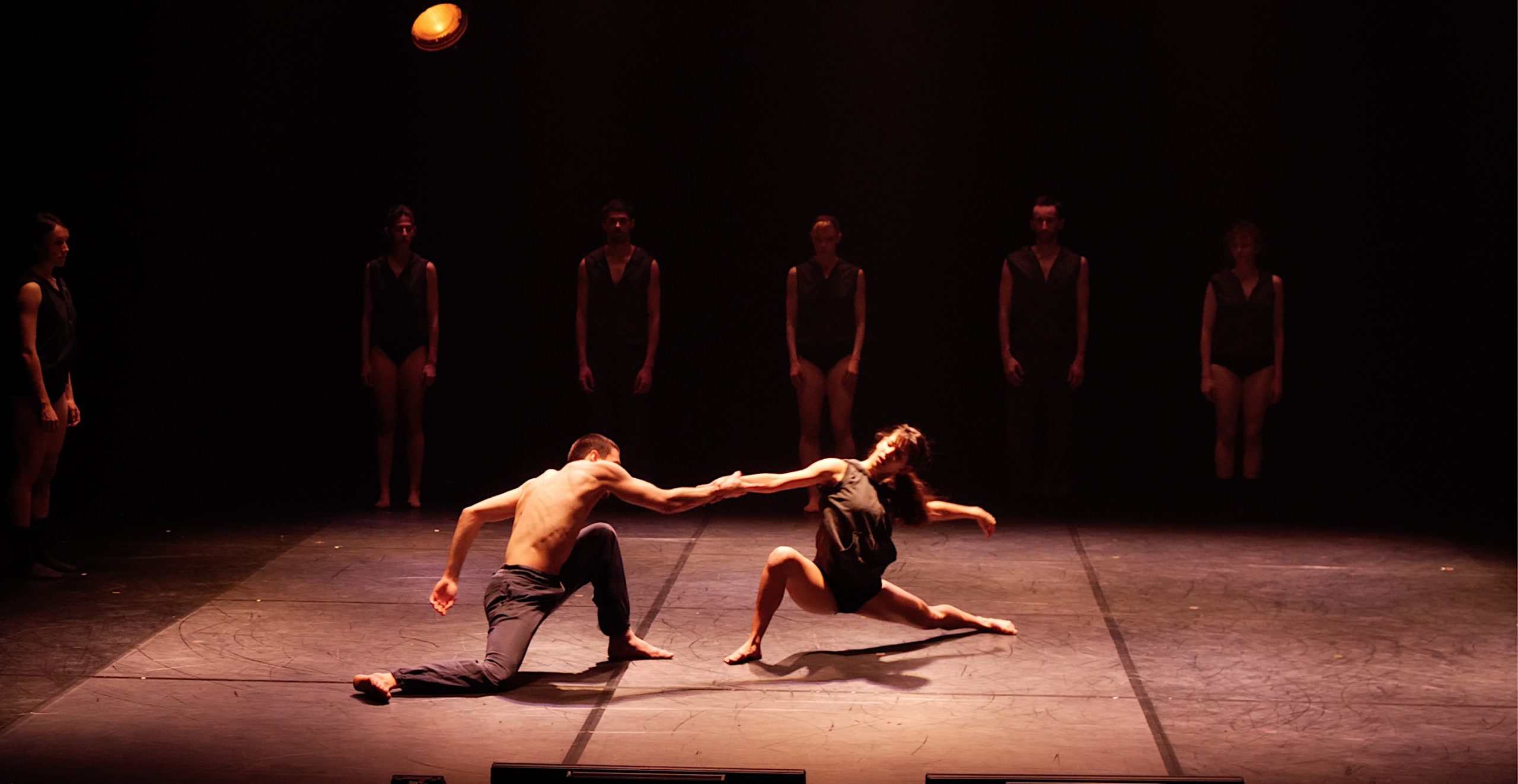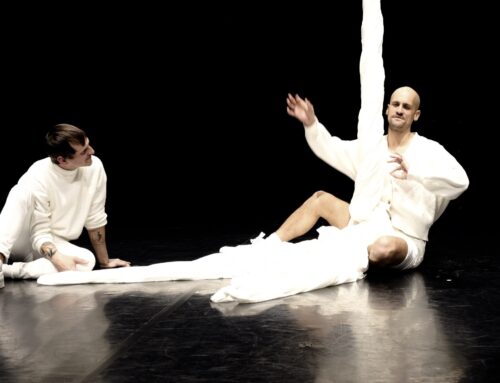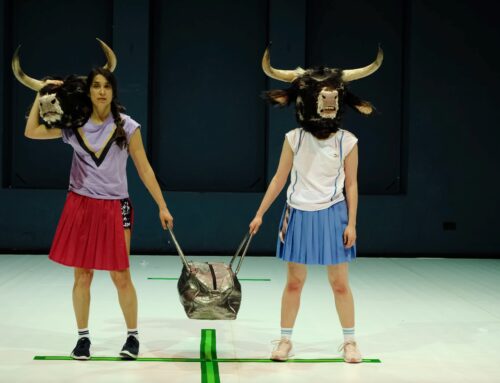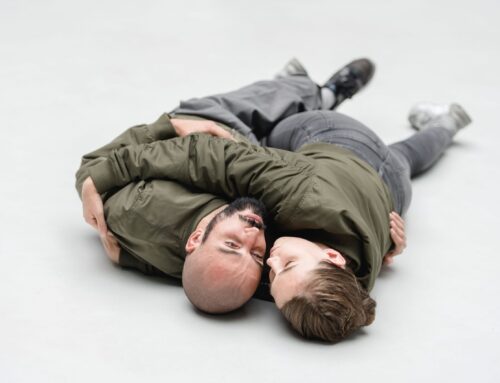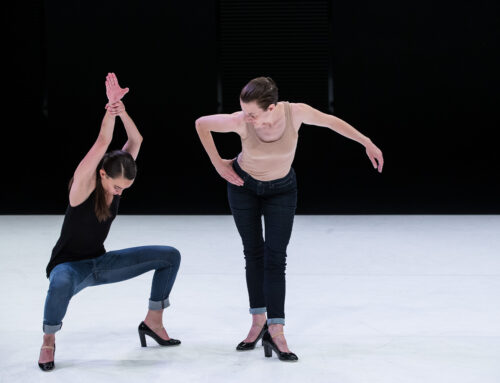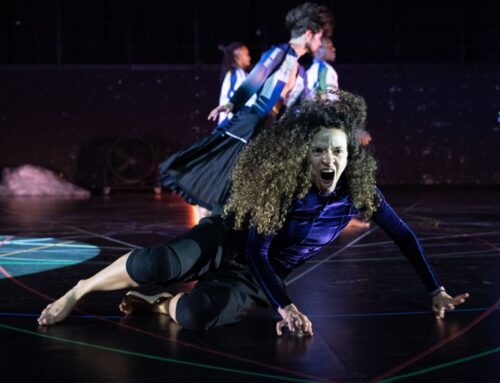Schrittmacher Festival:
Sexy stress-dance
„Asylum“ by the Kibbutz Contemporary Dance Company in Aachen, Fabrik Stahlbau Strang
By Nicole Strecker
translated by Karoline Strys
HERE you will find our Video-Impressions
A piece from Israel always does well in the festival program: it is a guarantee for hot-tempered, sensual dance, in which the spirit of the times is pulsating. At Schrittmacher, it is the regular guest of the Kibbutz Contemporary Dance Company, short KCDC, under the artistic direction of Rami Be’er. This time with a production called „Asylum.“ This can only be the piece of the moment. Right?
A shelter to be defended
Not quite. As KCDC has predominantly one theme: KCDC. Which is quite okay because the founding history and form of the company are special enough for an entire oeuvre. The „Kibbutz“ as part of the name is not just a label after all but to be understood quite literally: Founded in 1973 by Auschwitz survivor Yehudit Arnon, the company resides in a kibbutz in northern Israel, in Ga’aton near the Lebanese border. An entire village dedicated to dance. And to living with each other as a community. Anyone thinking about the concept of asylum here will probably have different ideas than a German who is currently dealing with more than 270,000 war refugees from the Ukraine (as of April 2, 2022). „Asylum“ – this is the kibbutz. This is Israel. A shelter that must be defended.
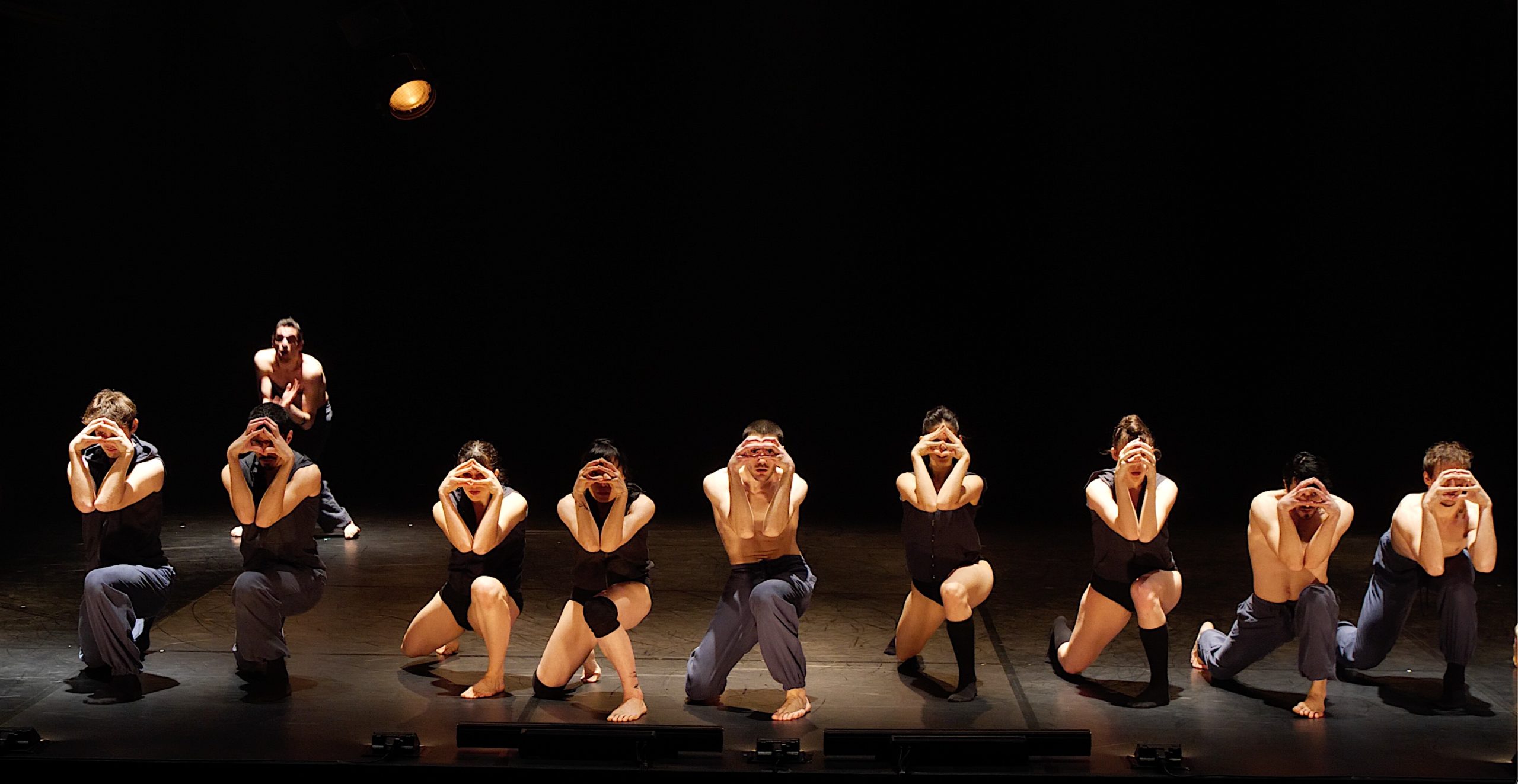
ASYLUM-Kibbutz©TANZweb.org_Klaus-Dilger
Where does the heart belong?
The inner conflict of Rami Be’er’s generation between loyalty to Israel’s First Generation, the victims of the Holocaust, and the suffering of being a nation at war itself – is perhaps reflected in the distance Rami Be’er always keeps from the collectives he portrays. No idyll, no sweet harmonies. But furiously desperate, madly lashing out, grotesquely grimacing group marches. The good, the bad – the boundaries are fluid, in each of us.
In his 2018 production, „Asylum,“ his ensemble is sliding backwards in socks, taking mini-steps. The music bumps in heart rhythm and the dancers, too, keep their fingers bent into a twitching heart, albeit in front of their hips. Then the hands move upwards and around on the body – where to with this ostentatious heart? Where does it beat, for whom does it beat, to whom does it belong?
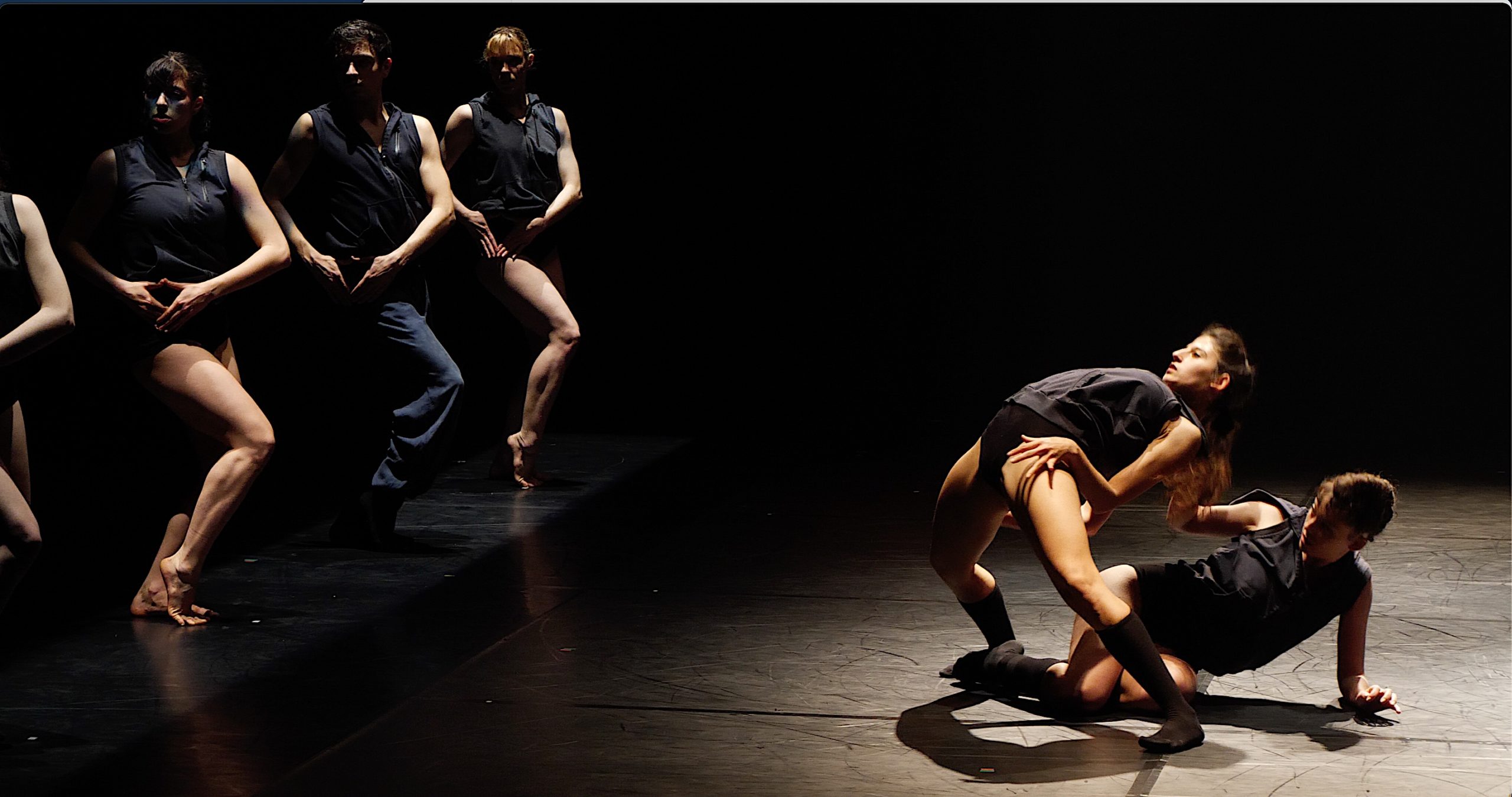
ASYLUM-Kibbutz©TANZweb.org_Klaus-Dilger
No place anywhere
A strong image that puts things straight right from the beginning: hardly anyone has already found their „asylum“ here. Not in love, which is reflected in wonderfully intricate, rough duos in which man and woman never long synchronously in the same direction. Permanently contradictory feelings are dragging at the bodies: longing for closeness and escape. Wanting to help and assaults. Violence and tenderness. But not in this collective either which drifts from folklore and ballroom dancing again and again into the martial, the dancers holding their arms up like guns. Whoever belongs here is also a fighter. No comfort, no peace is possible.
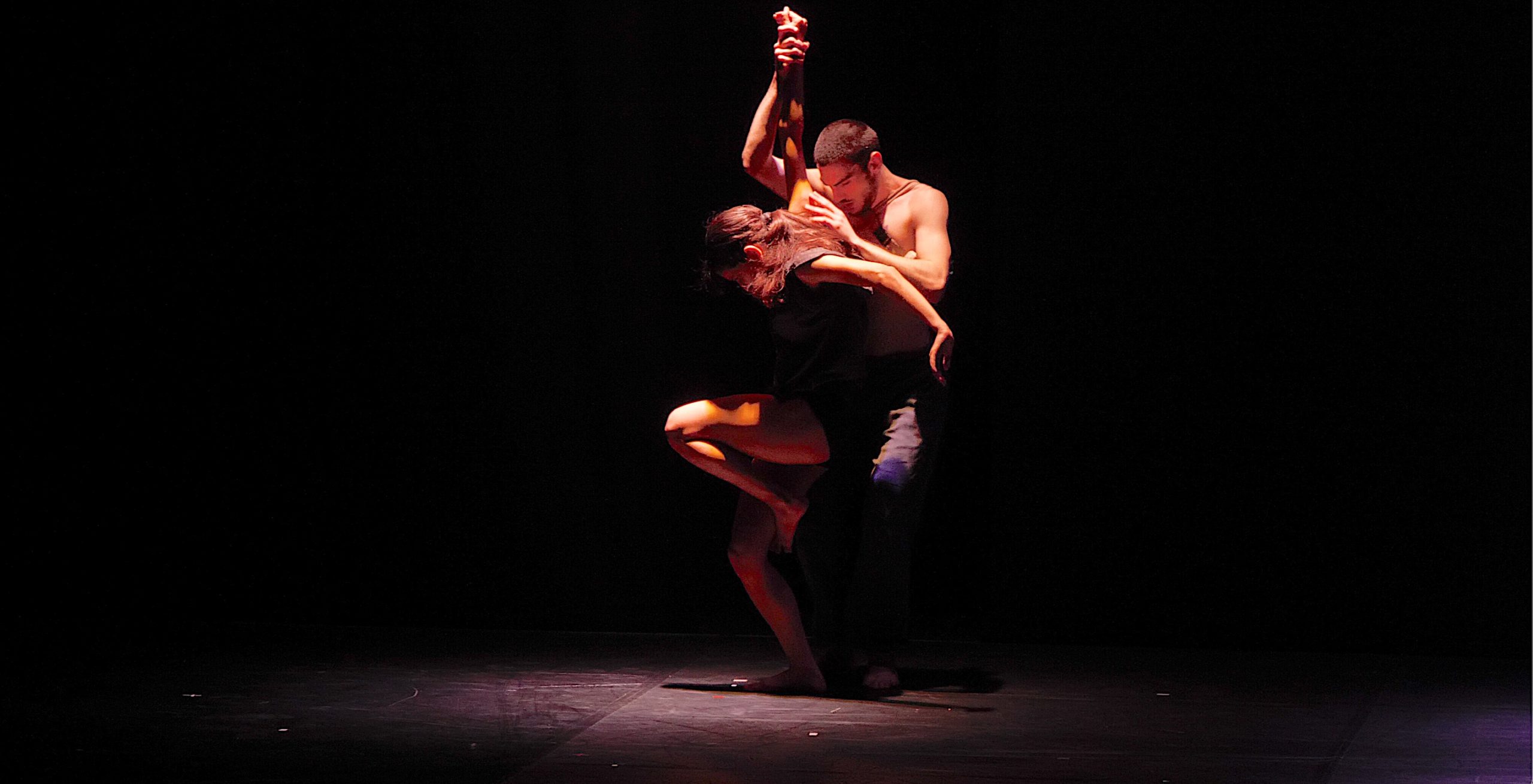
ASYLUM-Kibbutz©TANZweb.org_Klaus-Dilger
Dance as sanctuary?
Maybe yes! There might be a place of serenity and strength: The dancing body that does not lose its focus or balance, even when someone shouts with a megaphone directly into the ear: „712213“ – what might this number mean? The Auschwitz identification number of the company’s founder Yehudit Arnon? Because it is the duty of the descendants never to forget? That is what Germans think – and of course they could be completely wrong with this interpretation, which is burdened by feelings of guilt. Yet, one thing is to be sure: a Jewish and a German spectator will see two very different pieces this evening. But they have one thing in common: the pleasure of damn good dancing, a damn sexy looking ensemble, which apparently cannot help it but fling the stress out of their bodies. Always on the run. No „asylum,“ nowhere.
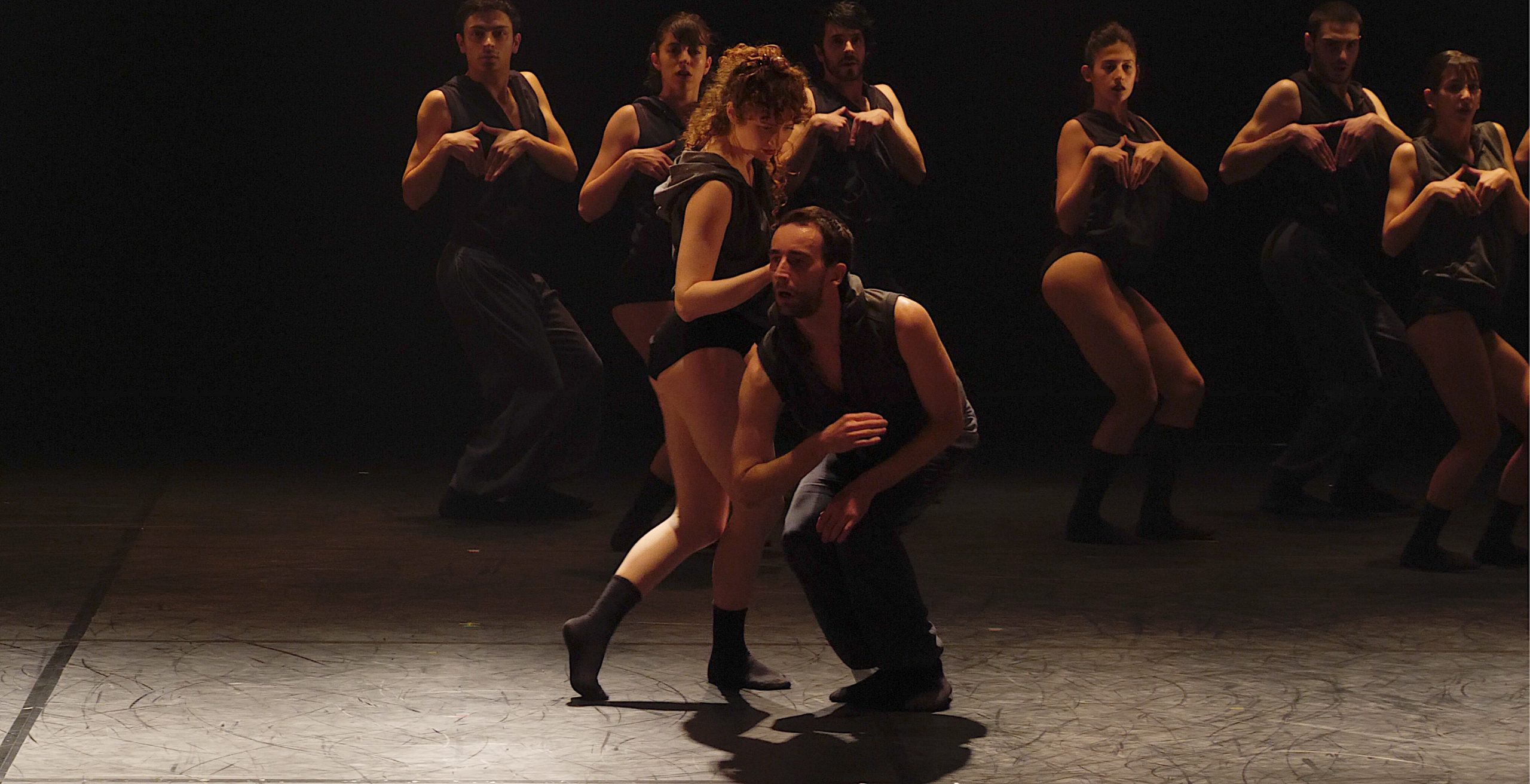
ASYLUM-Kibbutz©TANZweb.org_Klaus-Dilger

